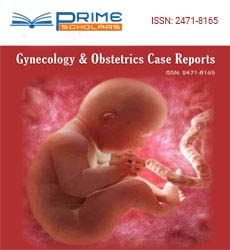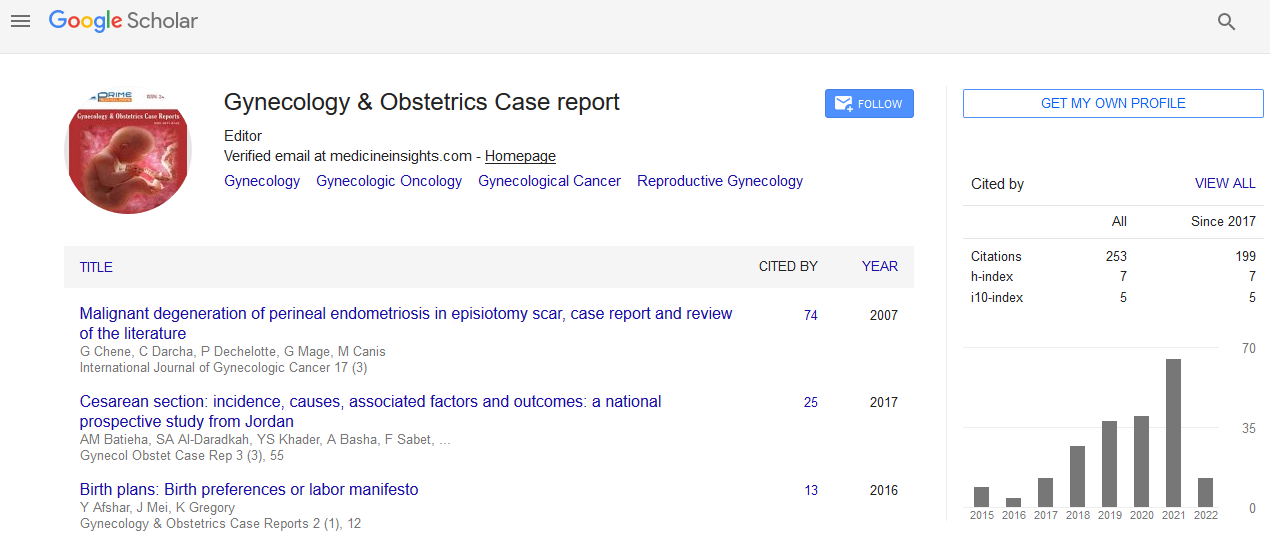Opinion - (2025) Volume 11, Issue 1
Comparative Analysis of CA-125 and HE4 Biomarkers in Ovarian Cancer Screening
Valentina Theo*
Department of Gynaecology, University of Basel, 4029 Basel, Switzerland
*Correspondence:
Valentina Theo, Department of Gynaecology, University of Basel, 4029 Basel,
Switzerland,
Email:
Received: 27-Dec-2025, Manuscript No. ipgocr-25-22695;
Editor assigned: 30-Dec-2024, Pre QC No. ipgocr-25-22695(PQ);
Reviewed: 10-Jan-2025, QC No. ipgocr-25-22695(QC);
Revised: 17-Jan-2025, Manuscript No. ipgocr-25-22695(R);
Published:
24-Jan-2025
INTRODUCTION
Ovarian cancer remains one of the most lethal gynecological malignancies worldwide due to its asymptomatic progression and late-stage diagnosis. The absence of specific symptoms in the early stages contributes significantly to the high mortality rate associated with this disease. In the quest for early detection tools, biomarkers such as Cancer Antigen 125 (CA-125) and Human Epididymis Protein 4 (HE4) have been studied extensively. Both markers have been incorporated into screening protocols and diagnostic algorithms; however, their individual and combined utility continues to be a subject of ongoing research and clinical debate [1].
CA-125 has long been used as a biomarker in the detection and monitoring of ovarian cancer. It is a high-molecular-weight glycoprotein that is elevated in approximately 80% of women with advanced ovarian cancer. Despite its widespread clinical use, CA-125 has significant limitations. One of the major drawbacks of CA-125 is its low sensitivity in detecting early-stage ovarian cancer. In early-stage disease, only about 50% of patients present with elevated CA-125 levels. Furthermore, CA-125 is not specific to ovarian cancer and can be elevated in a variety of benign conditions such as endometriosis, menstruation, pregnancy, liver disease and pelvic inflammatory disease. This lack of specificity leads to false-positive results, particularly in premenopausal women and diminishes its effectiveness as a sole screening tool [2].
DESCRIPTION
In contrast, HE4 is a relatively newer biomarker that has demonstrated promising results in the context of ovarian cancer detection. HE4 is a glycoprotein overexpressed in epithelial ovarian cancer, particularly in serous and endometrioid subtypes and is less frequently elevated in benign gynecological conditions compared to CA-125. This improved specificity makes HE4 a valuable biomarker, especially when used in conjunction with CA-125. Studies have shown that the combination of HE4 and CA-125, particularly in the Risk of Ovarian Malignancy Algorithm (ROMA), increases both sensitivity and specificity in differentiating malignant from benign pelvic masses. The ROMA score incorporates HE4, CA-125 levels and menopausal status to stratify patients into high- or low-risk categories for epithelial ovarian cancer.
Comparative analyses between CA-125 and HE4 have demonstrated that while CA-125 has been the traditional gold standard, HE4 provides additional diagnostic value, especially in cases where CA-125 alone may be inconclusive. For instance, HE4 maintains higher specificity in premenopausal women and is less likely to be elevated due to benign conditions. Moreover, HE4 has been shown to perform better in distinguishing malignant from benign tumors in patients with normal CA-125 levels, thus filling a crucial gap in diagnostic accuracy. It also holds prognostic value and has been investigated for its utility in monitoring disease progression and recurrence, although more research is required to establish its role in surveillance [3].
Despite these advantages, HE4 is not without limitations. It can be influenced by renal function, as HE4 is renally excreted. Elevated levels may occur in patients with reduced glomerular filtration rates, potentially leading to false positives in individuals with chronic kidney disease. Additionally, while HE4 shows promise in screening, it is not universally available or widely adopted in all clinical settings, which can hinder its integration into routine practice [4]. The use of CA-125 and HE4 together, rather than individually, represents a more comprehensive approach to ovarian cancer screening and diagnosis. Their complementary strengths with CA-125â??s established role and HE4â??s enhanced specificity provide a more robust framework for identifying women at risk. When integrated into multimodal screening strategies, these biomarkers may facilitate earlier detection and improved patient outcomes. However, further longitudinal studies and real-world clinical evaluations are essential to optimize their use, determine appropriate thresholds for diverse populations and assess cost-Effectiveness [5].
CONCLUSION
Both CA-125 and HE4 play pivotal roles in ovarian cancer detection. CA-125 remains an important biomarker with well-documented clinical relevance, while HE4 adds significant diagnostic specificity and utility, particularly when CA-125 results are ambiguous. Together, these biomarkers contribute to a more nuanced and effective approaches to ovarian cancer screening, enabling clinicians to better stratify risk and guide patient management. As research continues to evolve, the integration of these biomarkers with advanced imaging techniques and emerging molecular diagnostics holds the potential to transform ovarian cancer screening paradigms and ultimately reduce mortality associated with this challenging disease.
Acknowledgement
None.
Conflict of Interest
None.
REFERENCES
- Greene MH, Piedmonte M, Alberts D, Gail M, Hensley M, et al. (2008) A prospective study of risk-reducing salpingo-oophorectomy and longitudinal CA-125 screening among women at increased genetic risk of ovarian cancer: design and baseline characteristics: a Gynecologic Oncology Group study. Cancer Epidemiol Biomarkers Prev 17(3):594-604.
Google Scholar Cross Ref Indexed at
- Gierach GL, Pfeiffer RM, Patel DA, Black A, Schairer C, et al. (2014) Long-term overall and disease-specific mortality associated with benign gynecologic surgery performed at different ages. Menopause 21(6):592.
Google Scholar Cross Ref Indexed at
- Falconer H, Yin L, Grönberg H, Altman D (2015) Ovarian cancer risk after salpingectomy: a nationwide population-based study. J Natl Cancer Inst 107(2):410.
Google Scholar Cross Ref Indexed at
- Kauff ND, Barakat RR (2004) Surgical risk-reduction in carriers of BRCA mutations: Where do we go from here? Gynecol Oncol 93(2):277-279.
Google Scholar Cross Ref Indexed at
- Schmeler KM, Lu KH (2008) Gynecologic cancers associated with Lynch syndrome/HNPCC. Clin Transl Oncol 10(6):313-317.
Google Scholar Cross Ref Indexed at
Citation: Citation: Theo V. (2025) Comparative Analysis of CA-125 and HE4 Biomarkers in Ovarian Cancer Screening. Gynecol Obstet Case
Rep. Vol. 11 No.1:03.
Copyright: Copyright: © Theo V. This is an open-access article distributed under the terms of the Creative Commons Attribution License,
which permits unrestricted use, distribution and reproduction in any medium, provided the original author and source are
credited.

